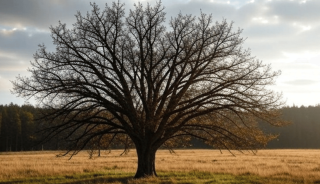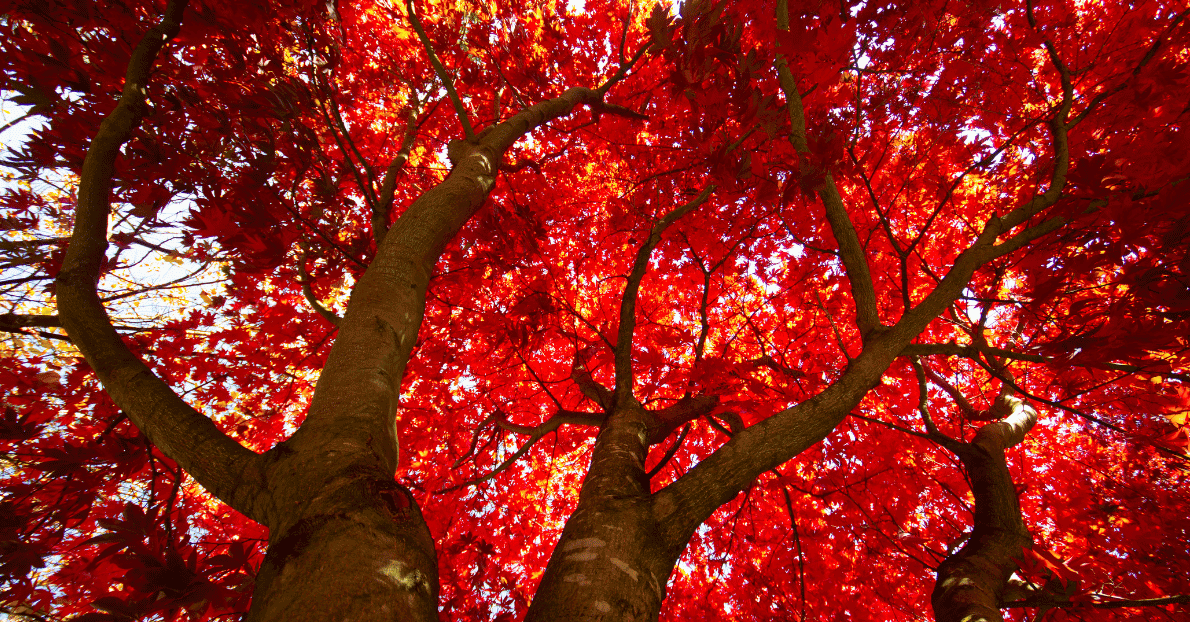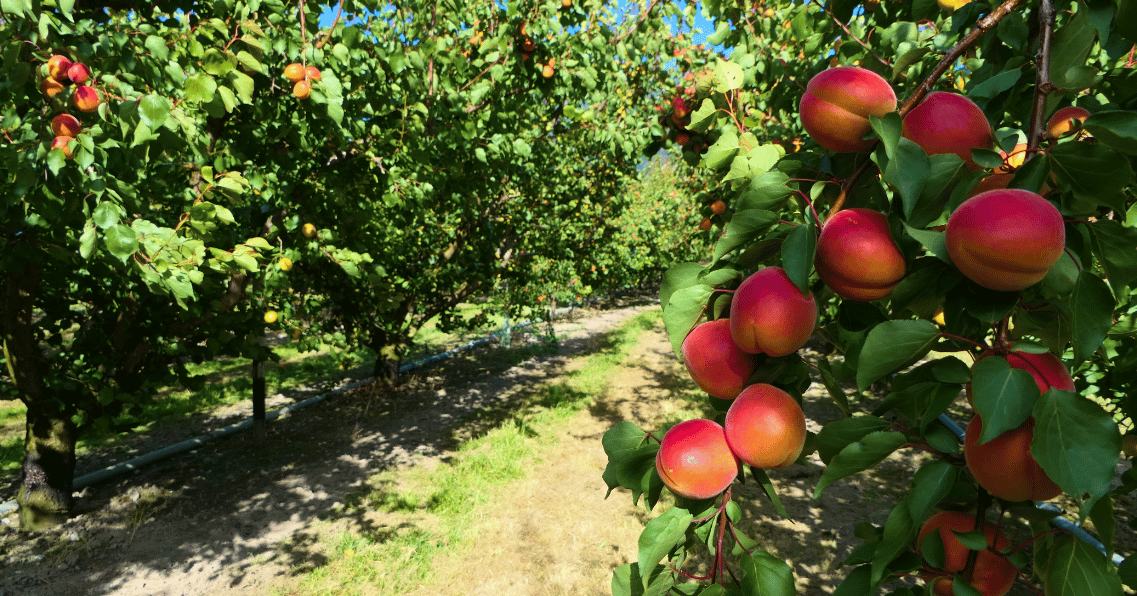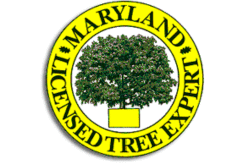Oak trees are strong and beautiful. But even the strongest trees can get sick or start to die. If you notice signs early, there’s a good chance you can save your tree. Let’s go over how to spot dying oak tree symptoms, what causes them, and what you can do.
The Different Signs That Your Oak Tree is Dying
Identifying what's wrong with your oak tree starts with knowing the symptoms. You might see bark peeling or cracking, changes in leaf size or shape, or early leaf drop. These can point to common pests and diseases, or more serious problems like acute oak decline or oak wilt.
Trees in the red oak group are especially vulnerable. Root grafting between nearby oaks can spread infections, so it's important to act quickly. To be sure, a lab test may be needed. For the most accurate diagnosis, contact an ISA certified arborist or an urban forestry consultant. They can help confirm the issue through professional assessment or even a laboratory diagnosis if needed.
You may not notice right away, but a dying oak tree gives off warning signs. Here’s what to watch for:
- Yellow or brown leaves, especially during the growing season.
- Leaves that drop early, even before fall.
- Bare branches, particularly at the top or in the center.
- Cracks or holes in the trunk or limbs.
- Mushrooms or fungus growing around the base.
- Soft or brittle wood, which could point to rot inside.
- Peeling bark, which may fall off in large chunks.
- Insects swarming or boring into the bark.
Each of these signs tells you your oak might be stressed or diseased.
How to Prevent Your Oak Tree from Dying
Preventing oak tree decline starts with basic care and smart choices. Avoid damaging the roots with lawncare machinery or heavy foot traffic, as soil compaction and root damage weaken your tree over time. Keep bark integrity intact by using good hygiene practices when pruning and cleaning up fallen debris. Always prune dead branches properly and at the right time of year to prevent infections.
Watch for defoliating insect infestations, which can stress the tree and lead to long-term decline. If needed, treatments like propiconazole injections can help fight diseases like oak wilt. Be cautious with herbicides near your tree, and follow oak harvesting guidelines to protect surrounding oaks.
Treatment and Management Solutions
If your oak tree is in trouble, it’s important to act fast. A professional arborist can assess the damage and recommend the right steps. In many cases, pruning away dead limbs or trimming the canopy helps relieve stress. If pests like beetles or aphids are present, baited traps or residual insecticides may be used to stop the spread.
For fungal infections, a fungicide may be applied at the root perimeter or directly to the trunk. Diseased debris should always be removed from the site to prevent reinfection. In some cases, trenching around the tree can stop root-based diseases like oak wilt. If the tree can’t be saved, stump grinding and tree removal service may be the safest option.
Tree trimming services can also keep nearby trees healthy by improving airflow and preventing disease. A wound sealer might be used after large cuts, but it depends on the situation. Every tree is different, so the best treatment comes after a proper inspection.
Common Causes of Oak Tree Death
Many things can harm your oak tree. Some are natural. Others are brought on by stress or infection.
Oak wilt
This is one of the deadliest threats. It spreads quickly through root systems or by beetles carrying spores. Leaves wilt, turn brown from the edges, and fall. Once infected, a tree may die within a season.
Dutch elm disease
Though it mostly affects elms, nearby trees can become stressed or weakened due to shared pests or fungus. Oaks can show secondary signs of decline.
Heartrot
This fungal disease attacks the inside of the tree. The heartwood softens, making the tree weak and dangerous. Signs include mushrooms on the trunk and hollow spots.
Aphids
These tiny bugs suck sap from leaves. They also leave behind a sticky mess called honeydew. This can lead to mold and attract other insects.
Bark beetles
These pests bore into the bark and lay eggs. Larvae feed on the tree’s inner layers. Over time, this blocks water flow and kills the tree.
Frequently Asked Questions about Oak Tree Decline
I Have an Oak Tree in My Yard That Might Be Dying. How Can I Tell for Sure?
Look at your tree carefully. Are there bare branches, strange leaf colors, or mushrooms near the base? If yes, call us.
We’ll come out and take a close look. We’ll inspect the leaves, bark, roots, and soil. We may take a core sample to test for disease. This helps us figure out what’s wrong and how bad it is.
Can I Save My Oak Tree if It Is Dying?
Yes, in many cases. But timing is everything. The earlier we catch the issue, the more likely we can fix it. Sometimes pruning is enough. Other times, we need to apply treatments or improve the soil. If pests are involved, we can use eco-friendly methods to remove them. If it’s a structural problem, we can brace the tree to keep it stable. But if the disease has spread too far or the tree is hollow, removal may be the safest option.
How Long Does It Take for an Oak Tree to Die?
It depends on the cause.
Oak wilt can kill a tree in a few weeks or months. Other diseases like heartrot take years to show signs. Pest damage can happen quickly if untreated. Drought or poor soil may weaken a tree slowly over several seasons.
If your tree’s decline feels sudden, it’s likely due to a fast-moving disease or infestation. If it’s been looking worse over time, the issue might be long-term stress.
How Much Does It Cost to Have an Arborist Save My Oak Tree?
The cost to save a dying oak tree depends on what's wrong and how big the tree is. If you’re searching for “how much does it cost to have an arborist save my oak tree,” know that prices can range widely. A simple health inspection might be very affordable, especially if you're just looking for peace of mind. If the issue involves pests, fungus, or disease, treatments can vary based on how many applications are needed. Bracing or cabling may cost more, but it could prevent serious damage. Tree removal is usually the most expensive option, especially if the tree is large or close to a home. At Strobert Tree Services, we offer free estimates with no pressure. We’ll explain what your tree needs and help you make the best choice.
Contact Strobert Tree Services
Worried about your oak tree? Don’t wait. Our certified arborists know how to spot dying oak tree symptoms and treat them before it’s too late. Whether your tree needs pruning, pest control, or support to keep it stable, we can help. If removal is the safest option, we’ll handle it with care. We serve Delaware, Pennsylvania, and New Jersey, and we’re here to protect your trees and your property.
Call Strobert Tree Services today to schedule a free estimate.











